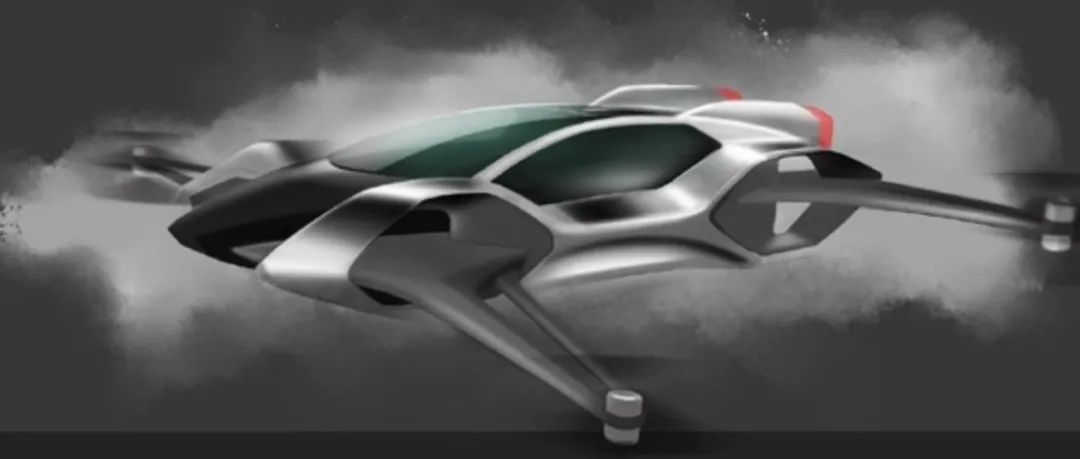Translation
From: Deng Simiao, Vice Driving Temple
Reference for intelligent cars| WeChat official account AI4Auto
Flying Cars – the disruptive direction that many giants and leaders are optimistic about. The latest technology storage pattern ranking report has been released.
This is based on patents. It is also the world’s first authoritative report on flying cars. It was compiled and released by the Japan Patent Office, covering the world and the time range is from 2012 to 2018.
This survey report mainly focuses on flying car technology-related patents worldwide, and conducts detailed statistics on the total number of patent applications for various countries, enterprises, and technologies. The summary can be summarized into three points:
First, from a national perspective, China and the United States are leading the world. From 2012 to 2018, 584 flying car-related patents were submitted in the United States, 574 patents were submitted in China, 307 patents were submitted in Europe, followed by Japan and South Korea.
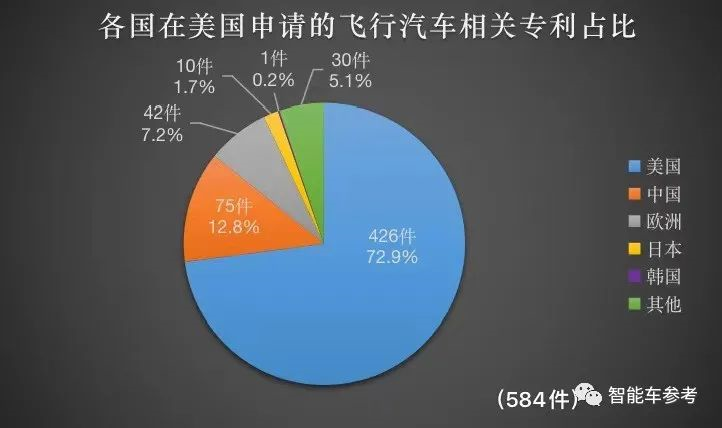

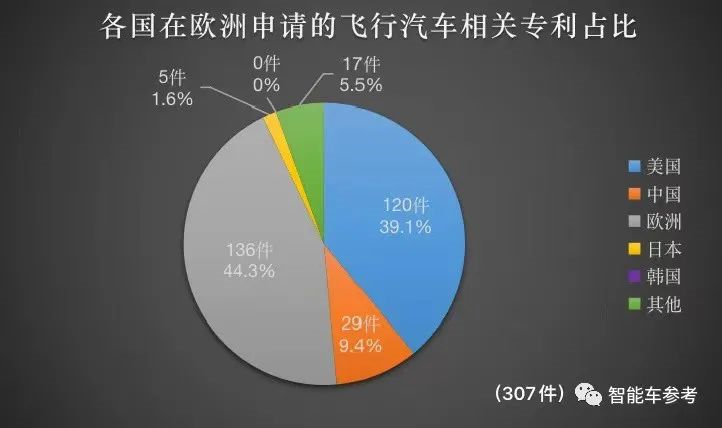
Second, from an enterprise perspective, Chinese company DJI Innovation ranks first in the world, and eight of the top ten are US companies, such as Amazon Technologies, Bell Helicopter, Walmart, Uber, etc.
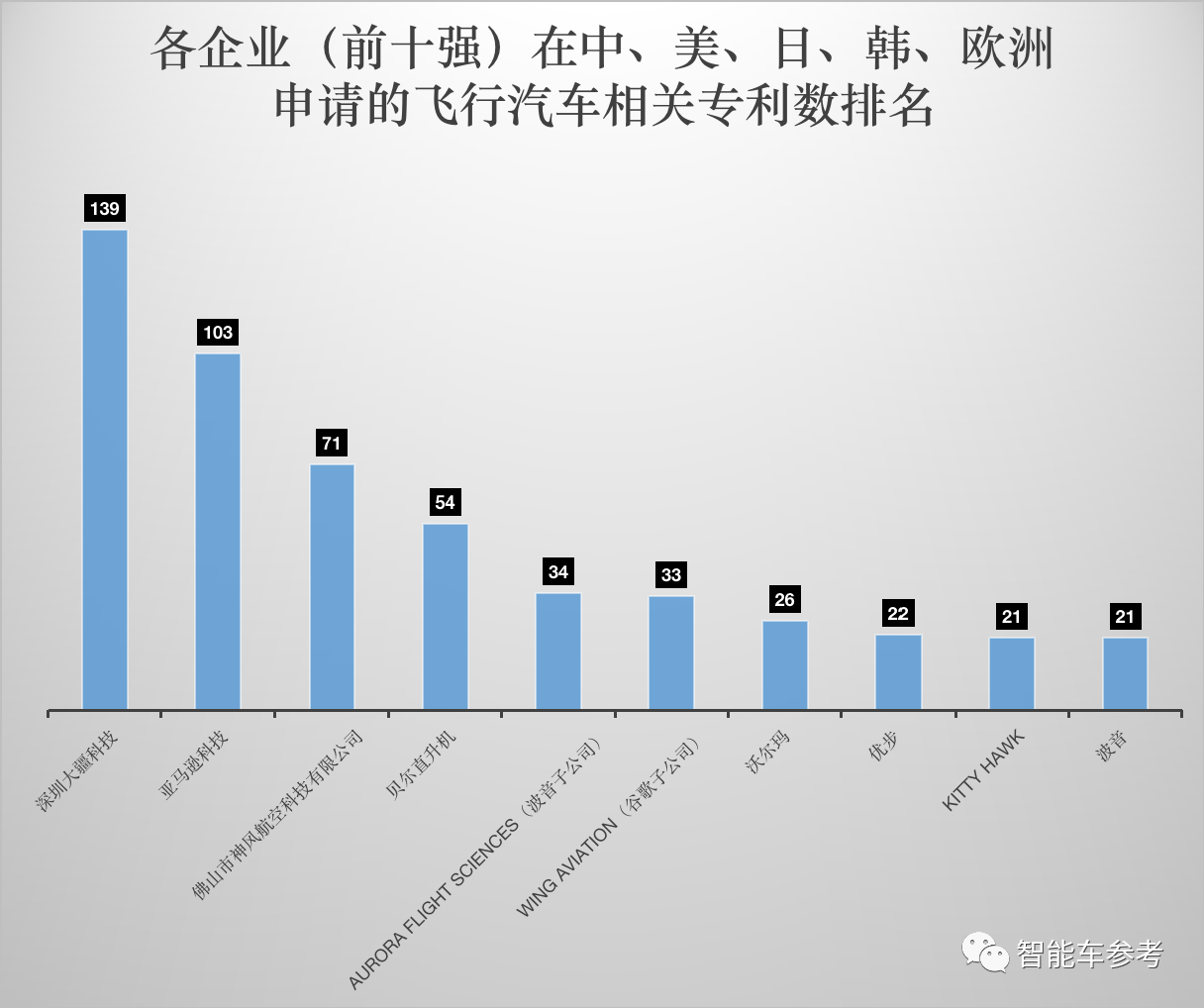
Third, the biggest dark horse player – Shenzhen Shenzhen Shenfeng Aviation Technology Co., Ltd., ranks third in the world in terms of patent applications and ranks first in patent applications related to charging batteries.
But to be honest, this is a company that may not be well known in China.
What is the latest patent situation for flying cars?
Returning to the technical content of the patent itself, it can be viewed from six dimensions:
The first is the body of the flying car, and the multi-rotor type is the most concerned.
China has applied for the most patents in this area, as many as 232, followed by the United States, which has applied for 148, and Europe only has 46.
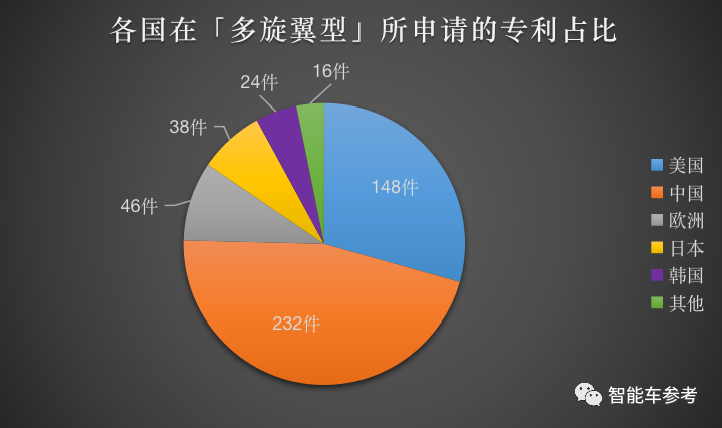
What is a multi-rotor type body?It is a common aircraft that can take off and land vertically. Its mechanical structure is very simple, and the power system can be achieved by directly connecting motors to propellers. The advantages are simple operation, high reliability, and low maintenance cost. The disadvantages are poor load capacity and endurance.
In addition, the number of related patents for thrust vectoring type is very high globally, ranking second in total, but has been declining since 2017, while the total number of lift cruise type ranks third and has grown rapidly since 2017.
The second is the “wing” of flying cars, with major players around the world aiming at propellers, which are rotary wings.
China has applied for 345 related patents, the United States has applied for 292 patents, and Europe has applied for 80 patents. In addition, many players are also paying attention to fixed-wing aircraft, with China applying for 102 patents and the United States applying for 57.
What is the difference between “rotary wing” and “fixed wing”?
Fixed-wing aircraft have a long history, mature technology, and are very safe, but takeoff and landing require high runway requirements. Rotary-wing aircraft do not require a runway, but have a small payload and low safety factor.
The third is the driving source, and all countries in the world are studying electric motors without exception.
China has applied for 335 related patents, while the United States has applied for 281 patents and Europe has applied for 82 patents.
It seems that everyone wants to develop pure electric flying cars. Are there any hybrid flying cars with gasoline-electric power?
China has applied for 47 patents in this field, the United States has applied for 22, and Europe ranks third.
The fourth is the power source, and the most popular one is rechargeable batteries.
The United States has applied for 241 related patents, China has applied for 238 patents, and Europe has applied for 61 patents.
In addition to rechargeable batteries, are there any other possibilities?
In fact, some people are studying fuel cells and generators, but currently, the number of applied patents is very small.
The fifth is the control device of the flying car, mainly focused on vertical takeoff and landing control.
For example, the United States has applied for 62 related patents, China has applied for 54, and Europe has applied for 24.
Translate the following Chinese text in Markdown format to English Markdown format, in a professional manner, preserving HTML tags inside the Markdown, and output only the result:
Next is the communication equipment of flying cars, which the United States attaches great importance to, and has applied for 156 patents in this area alone. China is second with 58 patents, and Europe has applied for 19 patents.
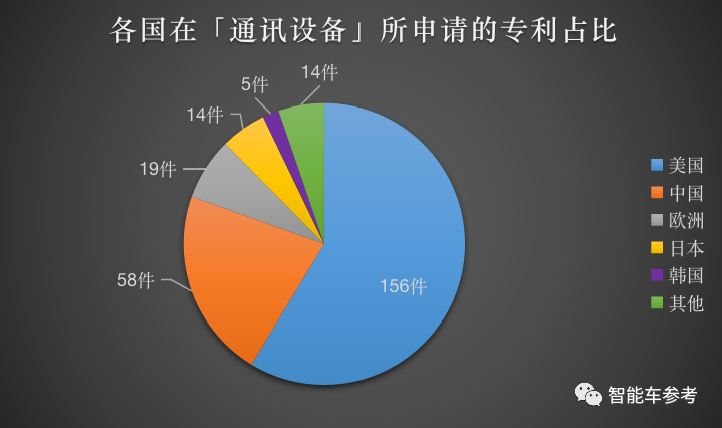
In addition, the report also summarized the number of flying car-related papers published from 2012 to 2021. In terms of quantity, Europe has published 152 papers on flying cars, ranking first in the world. The United States has published 94 papers, and China has published 42 papers, with Beihang University publishing 8 papers. Therefore, Europe’s progress in this field is showing signs of acceleration.
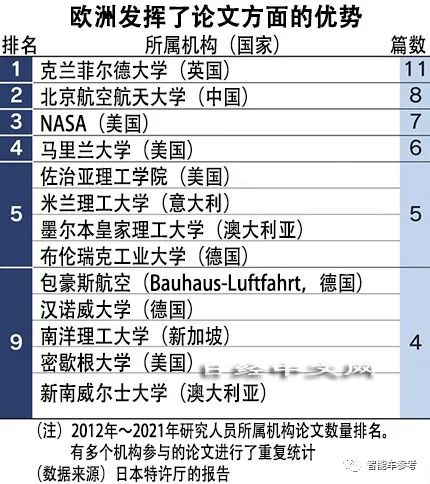
The Biggest Dark Horse: Foshan Shunfeng Aviation Technology
Undoubtedly, Foshan Shunfeng Aviation Technology Co., Ltd. is the biggest dark horse in this flying car report.
I don’t know if you’ve heard of it before, but in this patent ranking, it ranks third in the world, behind DJI, with 71 flying car-related patents.
It is worth noting that all of these 71 patents were applied for domestically in China.
What specific patents have they applied for?
These patents are all invention patents, such as: four-wheel-drive flying cars, new type of flying cars, multi-functional flying cars, self-generating electric flying cars, vertical take-off and landing flying cars, flying rescue cars, etc.
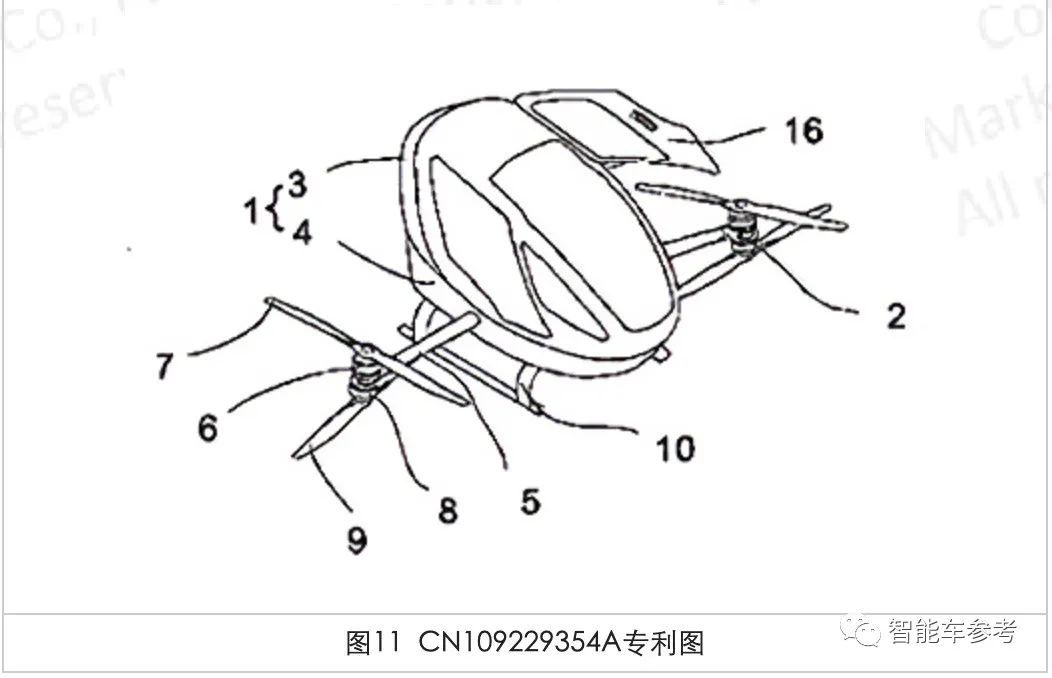
Generally speaking, invention patents have a high gold content, have transfer value, have a broad protection scope, and have a protection period of twenty years. They are difficult to apply for and are expensive. On the other hand, utility model patents have a lower threshold for application, with a protection period of ten years.
So it means that the company may not be well-known, but has some wealth.
In addition to the field of flying technology, they have also applied for patents in areas such as robots, fitness equipment, ship equipment, household items, and puzzles toys, such as symmetrical bipolar propulsion devices for ships, seaplanes, new adjustable dumbbells, self-controlled rotating fitness equipment, labor-saving walkers, household robots that can do housework, plastic potted plants that detect harmful gases, etc.
This company was established in 2013 and is located in the Science and Technology Incubation Center in Gaoming District, Foshan City. The legal representative is Wang Zhicheng, and the registered capital is 2.469136 million.
Who is Wang Zhicheng?
According to the Foshan Civilization Network, Wang Zhicheng is a post-70s person from Hunan Province, who studied refrigeration equipment and low-temperature technology in college, and has nothing to do with aviation. He has loved flying devices since he was a child, and went to Foshan, Guangdong for summer jobs during high school in order to save money to buy aviation-related books.In 2000, he applied for his first utility model patent and tasted the joy of success. In 2013, he resigned from the position of chief engineer at an electronics company and started a business in Gaoming, founding the company that exists today. In 2018, he was selected as the fourth generation entrepreneurial leader in Foshan, China.
In addition, Wang Zhicheng is also a representative entrepreneur of innovation and entrepreneurship in Foshan. His laboratory and office space have received local support, and his invention patents have also been financially supported by the local government.
Although not known for exposing his achievements, Wang Zhicheng once admitted in an interview that although he has obtained many patents, he has made few products besides prototypes, which he thinks is a shame.
He also said, “Patents have time limits. I hope to find venture capital firms and enterprises to realize the commercialization of patents before they expire, so that these invention patents can ultimately have social and economic benefits.”
What other layout of flying car patent is there in China?
Whether they can eventually be transformed into actual products or not, patents to some extent reflect the results of intellectual labor and technical development.
So specifically in China, what flying car related patents were applied for between 2012 and 2018?
There are several categories:
Quadrotor type, China applied for 232 related patents, ranking first in the world. Representatives include EHang Intelligence, Beihang University, and DJI’s “Multi-rotor manned aircraft.”
Helicopter blades, China applied for 345 related patents, also ranking first. For example, DJI’s “Mechanism for locking helicopter blades, helicopter blades, motors, power components, and unmanned flying vehicles” applied for in 2016, and “Helicopter blade installation structure, helicopter blades, power kits and unmanned aerial vehicles” applied for in 2018, both of which are invention patents.
Vertical takeoff and landing control, Northwestern Polytechnical University and Nanjing University of Aeronautics and Astronautics have conducted related research, and the patents applied for include “Composite vertical takeoff and landing, long-endurance electric unmanned aerial vehicle” and “Short-distance/vertical takeoff and landing aircraft using variant landing gears.”
Regarding academic papers related to flying cars, there are also some forward-looking academic studies.In 2017, Xu Bin and Tian Fugang from Beijing University of Aeronautics and Astronautics published a paper titled “Power Matching Analysis of Folding-Wing Flying Cars during Takeoff Stage Based on Dual-Mode Drive”. This paper studied the power control strategies for the takeoff stage of folding-wing flying cars, analyzed the dual-mode drive characteristics, and proposed the concept of optimal switching time through theoretical calculations.
In 2018, Xu Weihan from Nanjing University of Aeronautics and Astronautics published a paper titled “Overall Scheme Design of Autorotation Rotor Flying Cars”, which mainly researched the analysis and design methods of various types of autorotation rotors, providing some reference for the rotor configuration of autorotation rotor flying cars.
All of the above reflects the key research directions and development trends of future flying cars.
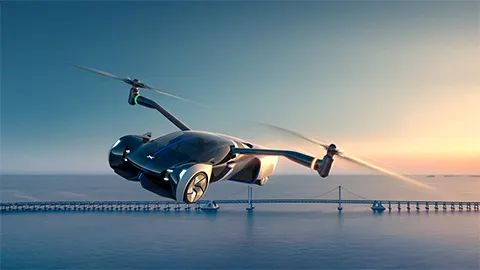
However, it was not until the 2020s that flying cars were mentioned more frequently in the new wave of car manufacturing, and even had a dedicated eVTOL (electric vertical takeoff and landing aircraft) track for exploring future forms of transportation.
Moreover, densely populated Japan began to take the research seriously as a “national policy”.
Of course, as with any new technology, opinions on flying cars are divided. Elon Musk, the founder of Tesla and SpaceX, is one of the most well-known people who doesn’t believe in flying cars. He said that flying cars are too noisy and cannot make the world a better place, so he focuses on rocket building, spaceship technology, and promoting sustainable energy. But as for flying cars, he won’t pursue it.
What do you think of flying cars?
— End —
This article is a translation by ChatGPT of a Chinese report from 42HOW. If you have any questions about it, please email bd@42how.com.
